Blogs : Asian University for Women Internee Fall 2019
Finding Happiness through Parklets
– Tuba Kausar, AUW student & IWB intern
My childhood was amazing and wonderful. I played so many exciting games such as ludo, badminton, cricket, and kabaddi. I talked with my neighbours and played around the whole street. Nowadays, sadly, most children in urban areas don’t play. Sometimes they don’t even know their neighbours because they always stay in homes and use Smartphones. They don’t go out to play. They don’t have spaces to talk, to play, and to enjoy their lives in a healthy, happy, and natural way. In our crowded, dense cities, a great solution for open space in urban areas is parklets.
A parklet is a small park. It is an extension of the sidewalk, utilizing space in the street that would otherwise be used for parking cars. That is, it converts parking into a small public park. Parklets helps increase public open spaces and greenery in cities. Parklets help create more areas for people to gather, for art installations, and for plants and trees. People can relax in that space, which is open and accessible for all rather than being used to store one personal vehicle. In parklets, everyone can play, sit, read books and talk. Parklets make the street more beautiful, lively, and safe. They create more opportunities and rewards for walking, and sometimes they can increase small business activities such as small cafes and restaurants. They can also contribute to creative community interactions. Most people these days do not* get a chance to get interact with their community. Parklets will be helpful for everyone to interact with each other so that strangers can become friends.
People in urban areas need more open space for their health. If they have open space, they can walk and get fresh air. Walking is vital for health and will help reduce diseases such as hypertension and diabetes. People in urban areas who drive rather than walk suffer more obesity, tension, and stress; parklets would reduce those problems and increase concentration as people will get fresh air and a green environment. Most students in urban areas stay in their rooms and spend hours a day with social media. They generally feel alone in their room and sometimes they are even afraid to interact face-to-face. More opportunities for socializing will help in reducing loneliness and frustration. Parklets would also help to bring awareness of nature and healthy living.
All told, parklets will be a fun, relaxing and inspiring place. Some people will enjoy a cup of coffee or tea with friends. Dogs can take a snooze by their owners. People will exchange information about the neighborhood—the best café, the friendliest shopkeepers. Parklets will provide a relaxing environment where people can enjoy a clear and fresh mind as well as having fun. We need more open spaces for a healthy and beautiful environment. We need more greenery. Unless and until we create more parks to serve all our neighborhoods, we need more parklets in urban areas.
Let’s work together to create parklets so that more children, youth, adults, and elderly people can play in parklets and interact with each other happily.
Different but Normal: Especially Amazing and Inspiring People I’ve Met
–To Thi Tuong Van, AUW student & IWB intern
People spend a lot of time and energy slapping labels on others. We talk about people’s nationality, religion, skin color, and other attributes that really reflect little about what is inside the person. Worse, we treat people badly just because they are different from us. All people should be considered equal, and should be labeled, first and foremost, as fellow human beings. And then we should also acknowledge how amazing some people are due to their special gifts and differences.
Some people are born without a normal body, or with a different sense of their gender than most of us. Some people do not have good living conditions. They are different from others because of their appearance, their gender, or their poverty, but when we look closer, we may find that they are special because of their extraordinary energy or other qualities.
Take, for instance, a beauty salon located in a small village in Savar, Bangladesh. The owner of the salon and many of her workers are transgender. The owner helps other transgender people. Every day they have to deal with problems because the villagers do not accept them. However, with their effort and their patience, they are now supported by police officers and by some more understanding members of the public. Their beauty radiates from them when they welcomed us to their parlor; their pride in their work was evident in their smiling faces.
And now meet Rifat. Rifat realized he was blind when he was eight years old. He faced innumerable difficulties during his schooling, yet managed to get a Masters degree from a famous university. After finishing his studies, once again, he faced a lot of difficulties to find a job. Others doubted his abilities. What, they wondered, can a blind man do? But in the end, with his own efforts, he is working at the local NGO Work for a Better Bangladesh Trust to help other people with disabilities access their rights.
Finally, let us take a quick stroll through Geneva Camp. Geneva Camp is a refugee camp for Urdu-speaking people originally from India. The residents suffer from poor living conditions. They are crammed into tiny rooms; some must sleep under a bed. They do not have clean water to drink. They do not have enough food to eat. However, they smile when a group of curious visitors walks through their Camp. They work hard in the hope that their children can go to school and can change their lives. Their resilience in the face of adversity is an inspiration for us all.
The people I have met and am writing about here are in fact normal people with the extraordinary energy of people with disabilities, transgender people, and refugees. Interacting with them can help make other “normal” people like us think differently about our lives. Their persistence in the face of so many obstacles can remind us of the importance of positive thinking, patience and effort, no matter what seemingly insurmountable difficulties we face in life. And, while we’re at it, being generous with our smiles when we do encounter these different but normal people would make life better for all of us.
Transgender: the Reflection of Nature’s Beauty
–Sidra Gul, Pakistan, AUW student and IWB intern
Diversity can be seen throughout nature. The plethora of diverse species, the variety of flora and fauna inhabiting the earth together shape the colorful beauty of nature. We human beings are a small part of this variation and array. We as a species also exist in multiple and diverse forms, each with unique features such as face, size, shape, personality and gender. But along with this vast diversity comes the need to embrace and accept differences. Accepting others is the key to our peaceful existence. Yet, we humans foolishly use our intellects not to bring harmony, but rather to define and emphasize our differences and to disempower each other based on labeled identities. We label ourselves as male and female and assign specific characteristic and roles to each. But then comes the identity of those who do not fit into these defined labels – the Transgender who are still not accepted in the society.
Transgender people are common in my country, Pakistan, but they are still deprived of their rights and are considered a social stigma. With this mindset embedded in me by society, my first encounter with them happened in Bangladesh at a transgender rally against climate crisis. Standing among them to tie green bands on their wrists as a symbol of nature and trees, I observed them closely for the first time. Their joyous laughter and their splendidly colorful appearances absorbed me into a new world for a while where color and happiness abound.
During the rally I stood holding hands with transgender people. At that moment I realized that they are not different from us. They have emotions like us, they have their own identity which is beautiful and rich and valuable. Though their identity varies from us, their faces are aglow with smiles. They are adorned in brightly colored saris, shining with brilliant make-up and earrings, their arms jingling with colored bangles. All those colors reflect and resemble the diverse colors in nature and its beauty. When you observe and look around you will see green trees, multi-colored flowers, blue sky with white floating clouds and every other thing with its own unique color. Similarly, all the colors of nature are contracted into one form that is reflected vividly in the graceful transgender appearance.

But when I observe how society approaches and behaves towards them, I grow disappointed and question the human beings’ intellect. We claim ourselves as superior beings, yet we are not ready to accept diversity and embrace the differences in nature. Everyone on this planet earth is equal and deserves the same resources, free space and respect, so why not transgender people? What a different world it would be if transgender people would be accepted with their true identities without any stigma attached, and respected and given the rights which they deserve. A grateful and compassionate life and society it would be where transgender people and everyone else would be proud of their identity and accepted as a reflection of nature. No labels to define you, no narrow boxes into which to be confined, no isolation from society, but rather you would be allowed to enjoy and express your true self.
Analyzing the society around me, the reality is this that we live in a community where difference means isolation. It makes me ponder how cruel we humans are and how much less rational than animals living in the jungle who happily accept diversity and live in harmony. These animals enjoy their free space, the resources and their spaces are respected. We humans, the so called intellectuals, can learn from the animals who know the working system of nature and accept diversity.
It is time we change our attitudes and perspectives to make the world and society a better place for everyone. It is the responsibility of every living individual to leave the society in a better shape for the next generation. Let’s stand up for transgender rights. I do not want my kids to grow up in a world where expressing your identity, where being yourself degrades your value and isolates you from society. I do not want my kids to learn that differences are stigma and everyone should be alike, unquestioningly performing the same assigned tasks. Rather, I want my kids to grow in a society where difference is seen as a reflection of nature, where we embrace colorful appearances and accept everyone as humans. I want them to know that transgender people are humans with emotions and identity and a reflection of the colorful rainbow holding together the beauty of nature. This is the world where I want my kids to grow and thrive.
To make the society a true accepting community, let’s celebrate differences. Let’s accept diversity and give transgender people their rights and place in the society. Otherwise the world will be devoid of its colors and beauty which are essential for its happy and lively existence.
Life in concrete and aquarium
–Samiksha Thapa, Nepal, AUW student and IWB intern
It has been years since I have known what peace feels like, what being alive feels like. Two years ago I came to this city for higher education, with the dream of living a modern urban life. But my life here is no different than that of the fish in the aquarium of my room. I have easy access to everything I need. Food, transportation, money, everything comes up within a click, just like the fish that get food to survive without having to ask. My dorm has colourful walls with a beautiful painting of a tree that triggers my memories of life back in the village. The aquarium has colourful fake plants. I have fairy lights that resemble the fireflies back home. And the bottled fragrance of room ‘freshener’. I wonder, if these fish could talk, would they too relate their sadness and deadness to me? With all these facilities I am so satisfied…but am I happy? Am I really alive?
When I try to concentrate on my studies or writing, various sounds make me lose my focus. The ticking of the clock reminding me to move with it, the buzz of the air conditioner, the shouts of neighbours partying next door, the banging of children kicking balls against a wall, the soft sad cry from fish and my heart and so much more. I cannot concentrate. I cannot be myself. My life is encased in the concrete walls of my bedroom and of classrooms. The little world I can see from the rooftop is a piece of sky and the concrete shapes of buildings holding other dead humans like me. My mind fills with so many thoughts. Should I not be roaming around, socializing with people live rather than in social media? Don’t I have the right to enjoy nature?
I don’t feel like living an artificial life anymore. When I see the fish, I realize they are trapped but I am not. I can go out to see the real colours of nature, to breathe the freshness of air and to feel alive. I take the fish with me in a small container and walk out to find us the place where we belong. We are the creatures of nature and we belong to nature, not to the human-made world of concrete or glass.
As soon as I step out of my building, a mindlessly rushing car almost hits me. I still decide to walk forward slowly. The streets that are supposed to show me the way are full of cars, smoke, dirt, horns and people shouting at each other to move. The river beside the road too is dead, clogged with sewage. I cannot leave my fish there to die. After walking for almost two kilometres, I finally find a park with a small cluster of greenery. I am asked to pay to enter and I do, thinking it will be worth the fee for the greenery and the beauty of nature. But again the place is crowded, plastics are thrown everywhere and the plants are limp, almost dead. How can I find peace here? This little park quenches the hope that had begun to rise in my tired soul, leaving me even more mentally disturbed and depressed. I realize the degradation of the natural environment is harming me not only physically but mentally. If I wander here longer, either I will become be dinner to hungry men or be smothered by pollution.
There are no more choices. I go back, back to concrete, back to the artificial world where it is safe for me and for my fish. I carefully place the fish back in their aquarium and play ‘the music of nature with water and birds sound’ on my phone. Once again my fish and I seem a little happy, but for how long? Till the battery of my mobile runs out??
Learning to be Grateful for the Gift of Nature Will Help Us Save Our Planet
–Paw Naw Ka Lu Taw, AUW student & IWB intern
These days, everyone paying any attention at all should know, see, and feel the climate crisis our planet faces today. It is no longer possible to deny its reality. What we are slower to accept is that just as human behavior towards our planet has caused the problem, so human behavior could dramatically reduce it.
We are experiencing several effects of climate change. There is rapid destruction of our planet’s environment. “Natural” disasters are proliferating. We are losing hundreds of thousands of species. All over the world, people are suffering from devastating floods, unbearable heat, intense storms, killer droughts, and deadly pollution. All of these problems can be tracked to one main source: our use of fossil fuels, which in turn remains high thanks to the trillions of dollars of subsidies to fossil fuel corporations.
The problem is undeniable, enormous, and terrifying. But we do have a solution. The very first, and crucial, step is to learn how to be grateful for the gift of nature. Nature has given us great gifts: fresh air, clean water, plants, trees, forests, and animals. Human beings ourselves, much as we may deny it, are part of nature.
It is not enough simply to accept those gifts and then destroy them thoughtlessly. We must maintain the gifts we have received by trying to restore them to their natural state. For example, we cut trees to build our homes, but we also need to plant more trees and care for them as well. If we cannot build factories in a way that does not destroy nature, we need to reconsider whether we truly need those factories in the same degree that we need nature.
Most importantly, we must stop damaging our planet. We must reduce our addiction to consumption. We must also stop subsidizing fossil fuel. If we learn how to be grateful for the gifts of nature—and act accordingly—we can help regulate the planet’s climate. We all should start taking action now for our planet! We should all begin by reflecting on the importance of nature and our foolishness in pretending that we can survive without it. Without nature, humans cannot live, thrive and survive in the future. It is time to learn how to be grateful for the gift of nature. It is time to achieve lifestyles that are in harmony with our environment. We all must join hands to save our planet from climate change.
+ ZEBRA CROSSINGS – OVER BRIDGES = SAFER ROADS FOR ALL
–Nusaiba Binte Zakaria, Bangladesh, AUW student and IWB intern
I was talking to my friend over the phone one day. She was telling me about how she was almost late for her 8 a.m. class as she had spent the previous night preparing for three back-to-back exams. I asked her whether she had used a foot over bridge or a zebra crossing on the way to her university. She remained quiet for a few seconds. With a hint of guilt in her voice, she then replied that she opted for the zebra crossing. Since it had only been a few days after a student had been killed in a road crash at that very zebra crossing, I began to scold my friend for not using the foot over bridge, hoping to talk some sense into her. However, now that I think about it, I wonder what exactly was my friend’s mistake. She should have been able to use the zebra crossing – an important traffic tool across the world – without having to worry about getting killed by a reckless driver. In fact, it is her right to be able to use a zebra crossing safely. As zebra crossings are more convenient than foot over bridges, it is crucial to have more zebra crossings and fewer foot over bridges in our cities to ensure safer roads for all.
Vehicles on our deadly roads tend not to halt and wait at zebra crossings. If pedestrians complain, traffic police often tell them (or even try to force them) to use foot over bridges instead. Nonetheless, climbing the stairs of these over bridges can be difficult for a healthy and non-disabled person, so one can very well imagine how the situation would be for a person with a disability. How would a person in a wheelchair climb up the foot over bridges? Or how would a blind person navigate the foot over bridges that sometimes go in so many different directions?
These over bridges make our lives more and more complex as opposed to making our lives easier. Even though our busy cities have a number of foot over bridges, most pedestrians prefer not to use them, risking accidents and death. If these over bridges were convenient and pedestrian friendly, people would use them on their own accord. People vote with their feet. 
In order to have safer roads for everyone, we need to prioritize pedestrians over vehicles. It is tragic and unacceptable to allow speeding vehicles and reckless drivers to take the lives of pedestrians. Therefore, we need to focus more on creating zebra crossings rather than foot over bridges.
I was part of a demonstration today where we were advocating for more zebra crossings and fewer foot over bridges in Bangladesh. It was wonderful to see people with different disabilities speaking so passionately about the importance of zebra crossings throughout that event. They spoke about some of the problems they face while using foot over bridges and provided thoughtful opinions on this issue. Even though it was a little depressing, it made me feel hopeful about our future. Someday I hope to live in a city where roads will be meant for people and not vehicles, and where we won’t have to worry about the possibility of becoming maimed or killed when rushing to cross the street when we’re late for class.
Urban Gardening: Great Recipe for Healthier People and Planet
–Noor Fareha, AUW student & IWB intern
Urban gardening is the art or practice of growing plants and food in urban areas. Urban gardening can help make our cities greener and healthier.
The climate crisis is a huge threat throughout the world. Our use of fossil fuels contributes to the climate crisis as well as to pollution. One big contributor to the use of fossil fuels is the growing, packaging, and shipping of food. We human beings are responsible for damaging our environment; there is no easy solution to the climate crisis. But growing more of our food within our cities, without artificial (petroleum-based) fertilizers, would help reduce the crisis.
City dwellers suffer from pollution, the urban heat island, lack of green spaces, and unavailability of organic food. One of the simplest and easiest ways to improve environmental quality in the cities is urban gardening. Growing more food in our cities reduces pollution, provides organic food and develops a natural habitat. How? First, urban gardening helps to reduce the air pollution of cities because rooftop gardens filter carbon emissions and the harmful toxins which are caused by transportation and industry. People sitting in urban gardens will get fresh air and have more oxygen so they will breathe freely. Second, urban gardening is a good way to produce organic and nutritious food. People in the urban areas create gardens in their free spaces, such as the rooftops and balconies in their buildings and even their window sills, where they grow food such as vegetables, fruits, and herbs. Such foods are healthier, organic and chemical-free foods as opposed to many of the fruits and vegetables available for sale. Finally, urban gardens create natural habitats for insects and birds.
Anyone involved in urban gardening can tell you: they have more chance to experience nature and the chirping of birds in cities. In short, urban gardening is an easy way to make our environment and ourselves fresher and healthier.
A Shift toward Car Free City
– Su ThinZar Naing, AUW student & IWB intern
As transport systems in cities become “modernized”, cars replace bicycles and walking. People spend a huge amount of money to buy a car, hoping that the car will enable them to reach their destination easily and conveniently. The money makes car, fuel, and other corporations rich while also contributing to the climate crisis, air pollution, noise pollution and traffic jams. More cars, more degraded environment. People seem not to notice that our planet is becoming more and more vulnerable because of their actions, and that their convenience comes at the price of the extinction of countless species. By now people have realized that cars bring congestion, pollution, and consumer debt, not convenience. They see that their car use is helping to destroy our planet. Yet they make excuses or simply ignore it, as if modernity necessarily means environmental devastation.
Does it have to be like this? How could we bring about positive change? Are there ways to get people out of their cars in order to build a healthy environment and save our planet? How could we create livable cities where people can move around freely on foot, by bicycle, and in trams, but not by cars?
Although carfree cities would be a great solution to many of our problems, it is undeniable that the process to make changes will take time. People are used to cars. They depend on cars. But difficult does not mean impossible, and the sooner we start making changes, the sooner we can enjoy the benefits. We could start by reducing our dependence on the car while also spreading awareness of the carfree city. We should start by implementing policies that promote the safety of pedestrians and cyclists and improving the public transportation system.
Pedestrians, not cars, should have priority on our roads. Cars should slow down to allow safe walking, rather than pedestrians dodging cars at the risk of their lives. Pedestrians should get ample space to walk. There should also be plenty of protected, designated space for cyclists. When w alking and cycling become safe and enjoyable, more people will walk and cycle rather than driving.
Of course people can’t walk and cycle everywhere. Hence we also must improve the public transportation system. When people have access to good quality public transit, they will realize that it is not necessary to own a car; they can save that money for better uses. Examples include building more trams, providing security to the public transportation users, improving the quality of public transportation, and providing a public bike sharing system. These will help people move about without a car and thus reduce our dependence on the car.
When governments make decisions about allocating space and budgets, they should prioritize walking, cycling, and public transit, not the car. People should be rewarded for moving around the city in ways that do not pollute the environment and do not harm others. Money and space for cars should only be allocated after other transport needs are met.
Obviously not everyone will agree with these ideas, though we would all benefit from cleaner, quieter, health-promoting cities with less congestion. We thus need also to engage in public education to spread awareness of the carfree city especially to the young generation. Young people should know about the disadvantages of cars and benefits of carfree cities. They can be encouraged to take part in making the shift toward carfree cities. In short, shifting to carfree cities will take time, but we should start now to find effective ways to reduce our dependence on cars while bringing about the liberating revolution of carfree cities.
Reduce cars in the present, gain carfree cities in the future
“Can global warming melt our brains too?”
–Nagham Doun, Syria, AUW student and IWB intern
On a typically hot sunny day in a tropical country, the above question was asked by a panting girl with sunburned cheeks who had just returned from an outdoor rally. The idea of the rally was to stand for climate action and call for global actions to reduce CO2 emission. Her question may have been a joke, but the scientific answer is that, yes, global warming can melt our brains. That is, higher temperatures result in decreased productivity, lack of brain function, and reduced intelligence. Does everyone know that climate change and global warming can affect us as humans? Do they care?
When we start talking about an environmental issue, most of us roll our eyes with a “whatever” smile on our faces. But the climate crisis is no “boring” environmental problem. When we say “climate crisis”, we are not overreacting. Pollution is killing us and other species, sure, but the climate crisis is vastly more serious. This time we truly have to act. What is important to know is that talking about the climate isn’t enough. Strong action is required, and we need that action now.
We need to make people know why we keep bringing up this term and why we keep talking about it in any possible chance. It is because this crisis needs all our attention in order to be solved. When we think about it as an environmental issue, we may feel bored, but when we think about it as a human development issue, as an issue that puts at risk the very notion of human civilization on this planet, then it sound scary for most of us, especially youth. Our lives are ahead of us—or would be if all the multiple crises involved in wreaking havoc on the climate allow us to live our full lives. To understand the importance of climate action, we need to understand the consequences of not taking action.
We may think that climate change affects nature, animals, their habitats and their survival (yawn). But it is foolish to keep isolating ourselves from these issues. We cannot continue to ignore the fact that we are also part of nature, and that when other species go extinct, our own future is endangered. We are part of this environment, and whatever happens to it, it will directly affect us.
We don’t think of climate change as a challenge for our survival. Alas, it is. Unpredictable weather and extreme weather events are causing declines in our food production that will only worsen with time. Due to climate change, we struggle to get safe drinking water and clean air to breath. Those problems too will worsen with time. The climate crisis affects our health and our very survival on this planet.
Some people may think that they do not have to worry about these effects if they live in a rich country. They just go right along emitting huge amounts of greenhouse gases so that the climate crisis continues to accelerate. If we haven’t yet been hit by flooding or other disasters, we may think we are safe. But we are not. The climate crisis is a global issue. It attacks globally and indiscriminately. Hurricanes, floods, cyclones, droughts, and rainstorms can’t distinguish between a rich country and a poor one, between those who emit large amounts of greenhouse gases and those who emit almost none.
As temperatures increase around the world, air conditioning will not solve the problem. Heat affects our physiology, it makes us less productive, and it reduces our ability of problem solving, thus reducing our cherished economic growth. If we keep refusing to change our behaviors, we are reducing the chances of survival for everyone on this planet.
Maybe it is a good thing that we were born in this era, where we need to be the ones who will take actions to save the globe. But if we don’t act, we may not be able to live to see how blindly and senselessly we destroyed our planet and how we did nothing when we still had the chance to save it.
Don’t Complain about Waterlogging If You Can’t Say No to Plastics
–Mohima Gomes, Bangladesh, AUW student and IWB intern
Once there was a time when thunderstorms brought delight in people’s hearts. For children, it meant running across fields to gather mangoes. For couples, it meant walking down the road holding hands, while elders enjoyed the view of the rain dripping onto their ginger tea. But today, the sight of dark clouds brings fear and tension among most of us city dwellers. “Will I have to carry my child on my shoulder while I am half submerged under sewage water? Will I be able to drive home safely, while my car is half sunk under the flood water in the traffic jam? Will the flood water decrease before my exam starts?”
Today in this modern world, our lives have become very “modernized” and “advanced”, but so have the problems we face. In Bangladesh, we face many problems today that did not exist one generation ago. Many of the problems are the direct result of our actions, such as overconsumption of “modern goods”. Among them, single-use plastics are the easiest to use but lead to numerable crisis, such as waterlogging. The use of single-use plastics significantly contributes to the waterlogging in the major cities of Bangladesh, and as its citizens, we must take responsibility for our actions.
 Single-use plastics refer to plastic items that are used only once. Objects such as polythene bags, disposable plastic bottles, drinking straws, plastic utensils, and plastic food packaging are a few examples. Many of us prefer using plastic bags over paper bags or, better yet, reusable jute or cloth bags. But do we know where it ends up in or how long it takes to decompose? A paper bag can take about three weeks, but a plastic bag can take up to 500 years to decompose! According to the article “POBA: Bangladesh Witnesses an 80 Fold Increase in Plastic Use since 1990” in Dhaka Tribune, Save the Environment Movement (POBA) released a survey that stated that only in the past 28 years, the use of plastics has increased by 80 times in Bangladesh. Also the Environment and Social Development Organization mentioned in a report that 3,744 tons of single-use plastics are produced annually in Bangladesh. Among this mountainous pile of non-decomposable waste, about 80 to 85 per cent is disposed into drains and rivers after just one use.
Single-use plastics refer to plastic items that are used only once. Objects such as polythene bags, disposable plastic bottles, drinking straws, plastic utensils, and plastic food packaging are a few examples. Many of us prefer using plastic bags over paper bags or, better yet, reusable jute or cloth bags. But do we know where it ends up in or how long it takes to decompose? A paper bag can take about three weeks, but a plastic bag can take up to 500 years to decompose! According to the article “POBA: Bangladesh Witnesses an 80 Fold Increase in Plastic Use since 1990” in Dhaka Tribune, Save the Environment Movement (POBA) released a survey that stated that only in the past 28 years, the use of plastics has increased by 80 times in Bangladesh. Also the Environment and Social Development Organization mentioned in a report that 3,744 tons of single-use plastics are produced annually in Bangladesh. Among this mountainous pile of non-decomposable waste, about 80 to 85 per cent is disposed into drains and rivers after just one use.
In recent years, many of us have suffered from waterlogging in our cities. Often we curse the government officials and the faulty government system. We say that the city corporation people are lazy, they don’t clean the drains, and they aren’t developing our cities. But have we thought; why are the drains getting clogged in the first place? Are the government officials the only ones who bear the blame? For us humans, sometimes it is hard to see the fault in ourselves. Let’s say, I bought myself a packet of chips and a bottle of coke, and an extra polythene bag to carry it. After a while, I consume both of them, and throw all three items on the street, which are washed into a nearby drain later. If this same action is repeated by at least 10 million people in the city, that is about 30 million plastic objects! Well, this is just a small number of single-use plastics disposed by us, yet it is enough to clog a drain. And no matter how much water you pour, the drain will remain clogged because plastic is not decomposable. 
The Bangladesh government has many responsibilities such as providing proper public services such as education and health care, maintaining roads, and disposing of our trash. But as citizens of the country, we cannot deny our own responsibilities. Why should we make the mess, then wait for the government to clean it, when with a little bit more effort, we can stop making the mess? We must reduce the consumption of single-use plastics if we want to make our cities more livable. And if we do this collaboratively, then think how much of a big impact we can make.
Some people say we should start by taking small steps such as throwing the trash in the right place. But just by disposing it in the right place, do we actually know where the plastic trash is ending up eventually? And why is it that companies can profit by selling us all these plastics, but bear no responsibility for their safe disposal? If we as humans can dream of building great things and achieving great success, why can’t we take big actions such as stopping the usage of single-use plastics to make our lives much better? It is time to realize our duty and stop making bigger messes. Let’s stop blaming the government and instead be more responsible for our actions. Say no to single-use plastics. Push our government to put a high tax on plastics so that environmentally-friendly alternatives become an affordable and common option. Say yes to safer and happier cities.
Bibliography
Amin, Mehendi Al. “4,000 Tons of Single-Use Plastic Produced Annually.” Dhaka Tribune, 2A Media Limited, 14 Nov. 2018, www.dhakatribune.com/bangladesh/environment/2018/11/15/4-000-tons-of-single-use- plastic-produced-annually
“POBA: Bangladesh Witnesses an 80 Fold Increase in Plastic Use since 1990.” Dhaka Tribune, 2A Media Limited, 22 Apr. 2018, www.dhakatribune.com/bangladesh/environment/2018/04/22/poba-bangladesh- witnesses-80-fold-increase-plastic-use-since-1990
Uddin, Minhaj. “Life ‘Worse than Hell’.” The Daily Star, The Daily Star, 23 July 2017, www.thedailystar.net/city/life-worse-hell-1437826






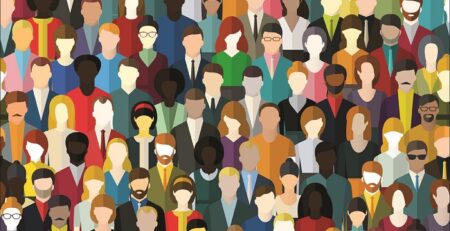
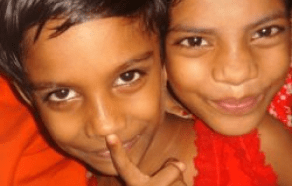
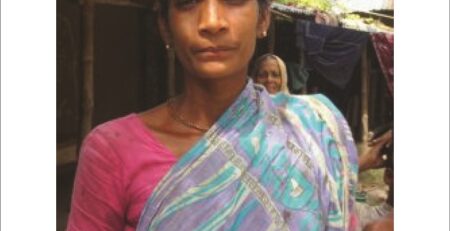
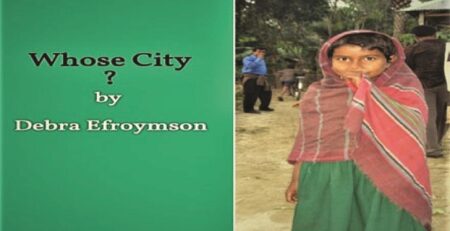

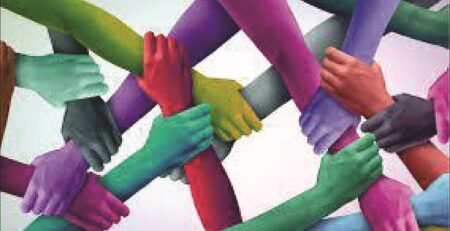

Leave a Reply